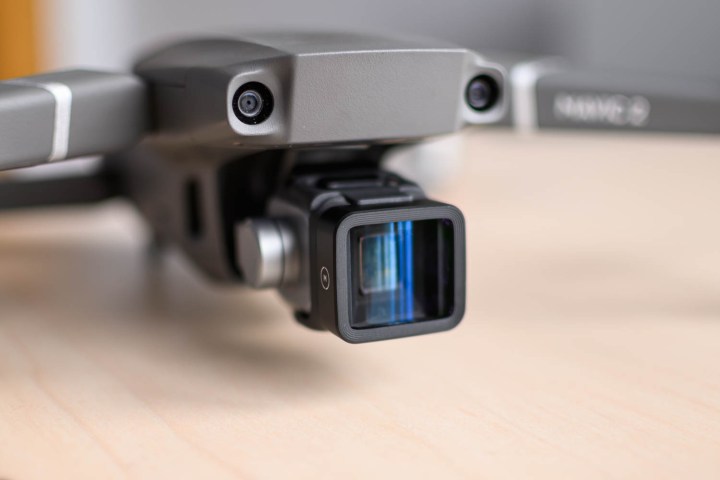
Moment, the company that makes high-quality lenses for smartphones, is expanding its expertise to drones — specifically the DJI Mavic 2 Pro and Mavic 2 Zoom. The platform is called Moment Air and it doesn’t just include lenses, but also filters, a new mounting system, as well as an iPhone case.
The anamorphic lens returns
There’s only one lens available at the moment, and it’s the Drone Anamorphic Lens. Moment released its cinematography-focused anamorphic lens for smartphones last year, which offers a cinema-wide aspect ratio as well as neat lens-flare effects. This lens delivers the same results, but it has been redesigned with “aerospace-grade composites and metals” — Moment is calling this “Featherlight” construction — to ensure it isn’t too heavy for the drone.
The Drone Anamorphic Lens uses a proprietary “Lock and Balance Mounting System,” which allows you to attach the lens over the drone’s camera, and add a counterweight to the other side so as to not impact the gimbal. It also makes sure the lens stays firmly in place, meaning you don’t need to worry about the lens falling off the drone in midair.
Moment also has a set of filters you can buy for the camera on the DJI Mavic 2 Pro or Mavic 2 Zoom. You can use an ND (neutral-density) filter to help control exposure and achieve a “cinematic blur,” or a CPL (circular polarizer/linear) filter, which helps reduce glare and bounces light away in different angles. These filters are made with aerospace-grade aluminum, and Moment claims they are the lightest available for Mavic 2 drones. They also sport hydrophobic coatings, and have scratch-resistant glass and “shatter-proof construction.” You can buy them for the anamorphic lens or for the camera on the drones — the filters aren’t interchangeable, though, as the ones for the lens have a different mounting mechanism over the ones for the Mavic 2’s camera.
A thin Moment case
You need a Moment case on your smartphone to be able to use Moment lenses, but they’ve usually been a little bulky. That means there’s better protection, but the downside is it can be tough to squeeze a phone into a drone controller, gimbal, or tripod without removing the case. The new Moment iPhone case resolves this, and it’s cheekily called the “fits in your drone controller iPhone case.”
It’s only available for the iPhone XR, iPhone XS, and iPhone XS Max at the moment, but it retains the same M-series mounting system so you can attach the latest Moment lenses to the case. It’s made of a polycarbonate composite and TPU material, and it’s only 0.75mm thick; it should be able to fit into any drone controller, gimbal, or mobile tripod without any issues. There’s even a wider cutout at the bottom so the case doesn’t interfere with any connected microphones.
Price and availability
Moment’s launching Moment Air on Kickstarter, and it’s expecting the new products to ship by November — if the campaign has been successfully funded. The Drone Anamorphic Lens costs $300, but Kickstarter backers can grab it for $200. The Airlight Drone Filters will set you back $120, but it’s just $100 on Kickstarter. The Ultra Thin Photo Case costs $30, but it’s $25 on Kickstarter.








